The old adage of “bigger is better” rings true in almost all aspects of American livestock agriculture, but for the Cowan family of GreenGold Dairy, Oregon, US, being bigger is only better if the focus is on one key trait: capacity.
Since 2001, the Cowans have strived to achieve a medium-frame Jersey grazing cow with massive intake capacity. Over 20 years later, the proof is in the pudding, with GreenGold Dairy producing heifers and AI sire straws that are sought after across the US and New Zealand.
Julian Cowan is a second-generation dairyman and manager of GreenGold Dairy, located near the coastal town of Nahalem, Oregon. The farm is owned by a four-member partnership of Julian, his sister Marika, and parents Brad and Melodie.
GreenGold Dairy was purchased in 2014 as a second unit for the Cowans and had been operated by the previous owners as a traditional confinement with 225 acres in support cropland.
The Cowan family have a long history of rotational grazing and since 2014 have installed a paddock system and leased further grazeable land to bring the total area farmed to 700 acres this year.
Six hundred spring-calving Jersey cows, along with 130 bred heifers and 270 heifer calves, are carried annually.
The Cowans are fortunate to be located within the milk supply catchment area of Tillamook Co-op. The co-op’s strong global brand allows it to typically pay a premium price to suppliers. However, milk quality standards are stricter than general class three cheese contracts across the country.
Milk price has been steady in recent months at $31 per cwt base (59.3c/l), with a 60c bonus for bacterial counts of 12,000mg/l or lower and a second 60c/cwt (1.14c/l) bonus available for SCC of 100,000mg/l or lower.
Julian has no plans to increase cow numbers and will not be affected by the new quota system imposed by the co-op.
Tillamook’s strong brand performance had encouraged the co-op to expand to the east coast, in what has proved to be a questionable decision. The quota system is aimed to limit further growth on the west coast and establish new suppliers on the east coast. Previously, all product was sourced in Oregon and transported across the country.
Being a grazing dairy in Oregon brings many benefits and challenges. The cool wet climate keeps grass growing throughout the winter, but frequent flooding and 120 inches of annual rainfall can make utilisation very challenging in spring and autumn.
Perennial ryegrass, chicory and plantain make up most of the forage base on GreenGold farm, with some fescue and Italian ryegrass planted in the lowest lying parts of the farm.
Cows are usually housed by late November, with on-off grazing beginning as soon as possible in spring. “We try to get them out as early as we can, as you know later in spring you’ll have to pull them off,” says Julian.
Before we switched to Jerseys in 2001, the Holsteins we had were getting too darn big and too much to go wrong
Grazing began on 2 February this year, before a flooding event on 23 February forced cows to be fully housed again for over a week.
“We’re one of the few ‘crazies’ in the area grazing cows and it all started with a Gallagher fence rep helping Dad get started years ago,” says Julian.
Work placement
A year-long work placement in Rotarua, New Zealand, gave Julian further inspiration to pursue a grass-based system and incorporate more Jersey genetics.
“Before we switched to Jerseys in 2001, the Holsteins we had were getting too darn big and too much to go wrong,” says Julian.
“New Zealand Jersey genetics were used in the early years, with Red Ribbon being a standout bull for the Cowans.
“We flushed a heifer to Red Ribbon in the early years and over half the herd today can be traced back to her,” says Julian.
Excellent recordkeeping and classifying the herd twice a year have allowed the herd to make outstanding progress over the years, producing cows with huge gut capacity and a powerful frame and structure.
Julian believes the focus on type and breeding for high capacity allows cows to have sufficient intake to meet their milk solids production potential, produce enough energy to breed back and have no feet or udder issues compromising their genetic potential.
Today, Julian has moved away from New Zealand genetics and is focusing on using some US bulls, but mostly home-bred bulls.
“We were happier a few years ago with New Zealand type, the soundness, the legs, the udders and SCC, but I don’t like the direction a lot of the New Zealand type is going in,” says Julian.
Positive figures for daughter pregnancy rate, components and health traits are now the primary focus for the herd as Julian believes his cows have the power and intake ability to support more improvement in these traits.
Medicine records have been strictly maintained for the past six years and are playing a larger role in culling, embryo flushing and breeding decisions each year.
All cows and heifers are bred to natural heats, with only one bottle of Lutealyse (breeding hormone) being used this year on a small number of dirty cows pre-breeding.
After nine weeks of AI, bulls are introduced for two weeks cleanup. Julian is a highly skilled herdsman and carries out all AI, embryo and pregnancy check work himself.
Cows are pregnancy checked beginning 26 days after AI service. Heat detection is the one area where Julian relies on technology, with autodrafting gates installed in the milking parlour and activity tags in all cows and heifers.
Bull selection
Bulls are selected on daughter-proven figures only and Julian is keen to stay away from genomic selection and the potential risk it brings to a stable herd. “I don’t need to be the guinea pig for people throwing everything against the wall,” says Julian.
The reluctance from utilising genomics comes in part from the discrepancies between how cows rank on a genomic test versus classification and daughter-proven figures.
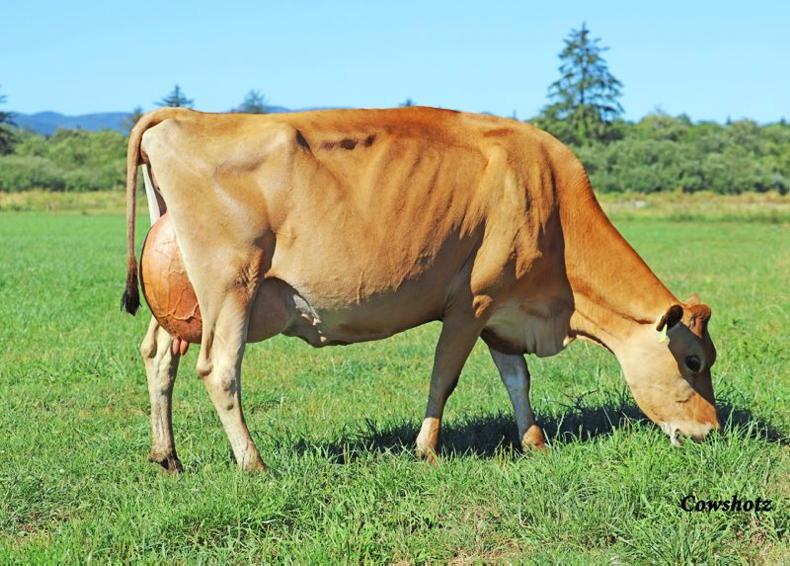
One of the Jersey cows bred by Julian, which is now a bull dam.
“We’ve been classifying for 20 years and our herd is three points above the national average. Our predicted transmitting ability is +4, yet when we run the genomics tests, it tells us we have a -7 predicted transmitting ability. Why believe genomics when you can trust the real-life results you can see in a cow?” says Julian.
The discrepancies in genomic results from cows that have outstanding fertility and production records may come from what Julian calls “cookie cutter genomics”.
“In the US system, if you’re not related to the top cow families, your herd is ranked out. It’s the same in every continent, New Zealand has its ranking, Ireland has its ranking. There’s no global uniform system for this type of cow and even if your cows are great, they have to be related to whatever cookie cutter genetics the local system favours” says Julian.
Demand for AI straws from GreenGold Farm has increased in recent years, from herds in the midwest, east coast and New Zealand seeking good grazing genetics.
Forty bull calves with AI potential are retained each year, with further selection through dam records and Zoetis health trait testing to identify the best bulls.
Straws are typically collected on-farm by Hoffman AI company, Utah, and distributed across the country. For overseas buyers, bulls must be sent to specific national studs for semen collection to comply with export regulations.
“The ultimate goal is to breed a healthy cow that produces without the need for any antibiotics,” says Julian. After 20 years of breeding success, the future looks bright for GreenGold Dairy and its impact on US grazing genetics.
The herd produces 11,500lbs (5,064l) of milk per cow with 5.4% fat and 3.85% protein this year, which is 483kg MS/cow from 1t of meal per cow.The herd was fed over 2t of meal per cow per year due to a poor grass growing year. It is normally half that. The farm is estimated to grow about 10t DM/ha, on average.
The old adage of “bigger is better” rings true in almost all aspects of American livestock agriculture, but for the Cowan family of GreenGold Dairy, Oregon, US, being bigger is only better if the focus is on one key trait: capacity.
Since 2001, the Cowans have strived to achieve a medium-frame Jersey grazing cow with massive intake capacity. Over 20 years later, the proof is in the pudding, with GreenGold Dairy producing heifers and AI sire straws that are sought after across the US and New Zealand.
Julian Cowan is a second-generation dairyman and manager of GreenGold Dairy, located near the coastal town of Nahalem, Oregon. The farm is owned by a four-member partnership of Julian, his sister Marika, and parents Brad and Melodie.
GreenGold Dairy was purchased in 2014 as a second unit for the Cowans and had been operated by the previous owners as a traditional confinement with 225 acres in support cropland.
The Cowan family have a long history of rotational grazing and since 2014 have installed a paddock system and leased further grazeable land to bring the total area farmed to 700 acres this year.
Six hundred spring-calving Jersey cows, along with 130 bred heifers and 270 heifer calves, are carried annually.
The Cowans are fortunate to be located within the milk supply catchment area of Tillamook Co-op. The co-op’s strong global brand allows it to typically pay a premium price to suppliers. However, milk quality standards are stricter than general class three cheese contracts across the country.
Milk price has been steady in recent months at $31 per cwt base (59.3c/l), with a 60c bonus for bacterial counts of 12,000mg/l or lower and a second 60c/cwt (1.14c/l) bonus available for SCC of 100,000mg/l or lower.
Julian has no plans to increase cow numbers and will not be affected by the new quota system imposed by the co-op.
Tillamook’s strong brand performance had encouraged the co-op to expand to the east coast, in what has proved to be a questionable decision. The quota system is aimed to limit further growth on the west coast and establish new suppliers on the east coast. Previously, all product was sourced in Oregon and transported across the country.
Being a grazing dairy in Oregon brings many benefits and challenges. The cool wet climate keeps grass growing throughout the winter, but frequent flooding and 120 inches of annual rainfall can make utilisation very challenging in spring and autumn.
Perennial ryegrass, chicory and plantain make up most of the forage base on GreenGold farm, with some fescue and Italian ryegrass planted in the lowest lying parts of the farm.
Cows are usually housed by late November, with on-off grazing beginning as soon as possible in spring. “We try to get them out as early as we can, as you know later in spring you’ll have to pull them off,” says Julian.
Before we switched to Jerseys in 2001, the Holsteins we had were getting too darn big and too much to go wrong
Grazing began on 2 February this year, before a flooding event on 23 February forced cows to be fully housed again for over a week.
“We’re one of the few ‘crazies’ in the area grazing cows and it all started with a Gallagher fence rep helping Dad get started years ago,” says Julian.
Work placement
A year-long work placement in Rotarua, New Zealand, gave Julian further inspiration to pursue a grass-based system and incorporate more Jersey genetics.
“Before we switched to Jerseys in 2001, the Holsteins we had were getting too darn big and too much to go wrong,” says Julian.
“New Zealand Jersey genetics were used in the early years, with Red Ribbon being a standout bull for the Cowans.
“We flushed a heifer to Red Ribbon in the early years and over half the herd today can be traced back to her,” says Julian.
Excellent recordkeeping and classifying the herd twice a year have allowed the herd to make outstanding progress over the years, producing cows with huge gut capacity and a powerful frame and structure.
Julian believes the focus on type and breeding for high capacity allows cows to have sufficient intake to meet their milk solids production potential, produce enough energy to breed back and have no feet or udder issues compromising their genetic potential.
Today, Julian has moved away from New Zealand genetics and is focusing on using some US bulls, but mostly home-bred bulls.
“We were happier a few years ago with New Zealand type, the soundness, the legs, the udders and SCC, but I don’t like the direction a lot of the New Zealand type is going in,” says Julian.
Positive figures for daughter pregnancy rate, components and health traits are now the primary focus for the herd as Julian believes his cows have the power and intake ability to support more improvement in these traits.
Medicine records have been strictly maintained for the past six years and are playing a larger role in culling, embryo flushing and breeding decisions each year.
All cows and heifers are bred to natural heats, with only one bottle of Lutealyse (breeding hormone) being used this year on a small number of dirty cows pre-breeding.
After nine weeks of AI, bulls are introduced for two weeks cleanup. Julian is a highly skilled herdsman and carries out all AI, embryo and pregnancy check work himself.
Cows are pregnancy checked beginning 26 days after AI service. Heat detection is the one area where Julian relies on technology, with autodrafting gates installed in the milking parlour and activity tags in all cows and heifers.
Bull selection
Bulls are selected on daughter-proven figures only and Julian is keen to stay away from genomic selection and the potential risk it brings to a stable herd. “I don’t need to be the guinea pig for people throwing everything against the wall,” says Julian.
The reluctance from utilising genomics comes in part from the discrepancies between how cows rank on a genomic test versus classification and daughter-proven figures.

One of the Jersey cows bred by Julian, which is now a bull dam.
“We’ve been classifying for 20 years and our herd is three points above the national average. Our predicted transmitting ability is +4, yet when we run the genomics tests, it tells us we have a -7 predicted transmitting ability. Why believe genomics when you can trust the real-life results you can see in a cow?” says Julian.
The discrepancies in genomic results from cows that have outstanding fertility and production records may come from what Julian calls “cookie cutter genomics”.
“In the US system, if you’re not related to the top cow families, your herd is ranked out. It’s the same in every continent, New Zealand has its ranking, Ireland has its ranking. There’s no global uniform system for this type of cow and even if your cows are great, they have to be related to whatever cookie cutter genetics the local system favours” says Julian.
Demand for AI straws from GreenGold Farm has increased in recent years, from herds in the midwest, east coast and New Zealand seeking good grazing genetics.
Forty bull calves with AI potential are retained each year, with further selection through dam records and Zoetis health trait testing to identify the best bulls.
Straws are typically collected on-farm by Hoffman AI company, Utah, and distributed across the country. For overseas buyers, bulls must be sent to specific national studs for semen collection to comply with export regulations.
“The ultimate goal is to breed a healthy cow that produces without the need for any antibiotics,” says Julian. After 20 years of breeding success, the future looks bright for GreenGold Dairy and its impact on US grazing genetics.
The herd produces 11,500lbs (5,064l) of milk per cow with 5.4% fat and 3.85% protein this year, which is 483kg MS/cow from 1t of meal per cow.The herd was fed over 2t of meal per cow per year due to a poor grass growing year. It is normally half that. The farm is estimated to grow about 10t DM/ha, on average. 




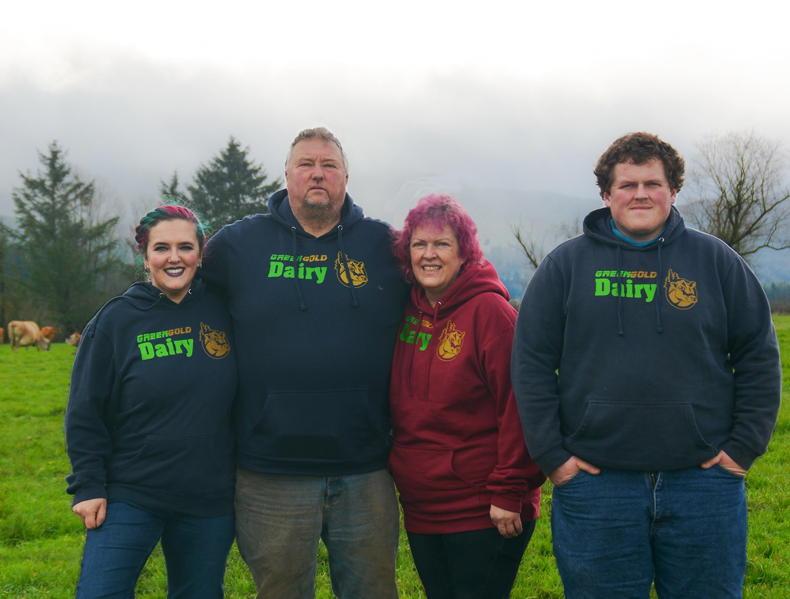
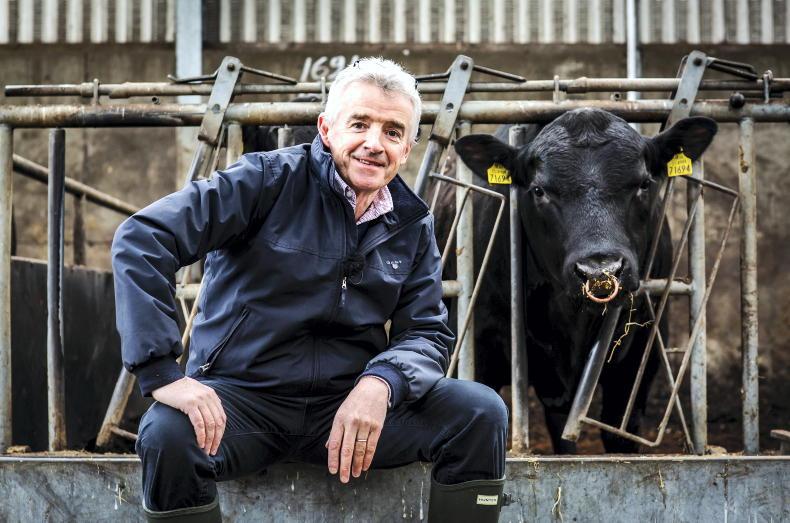
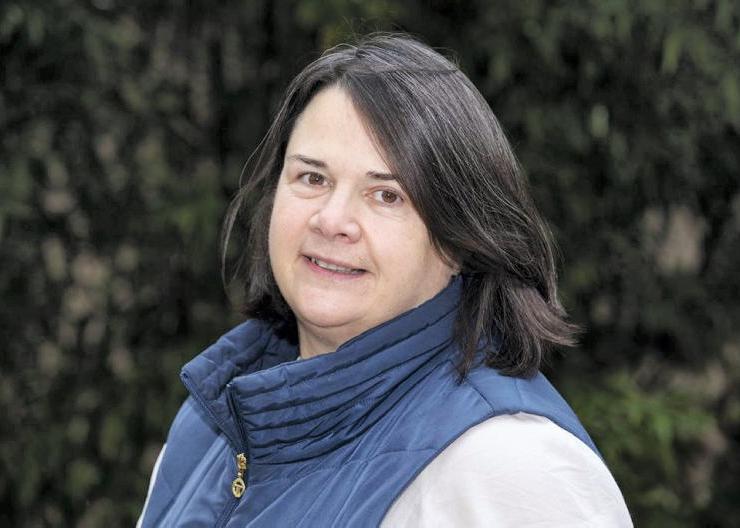
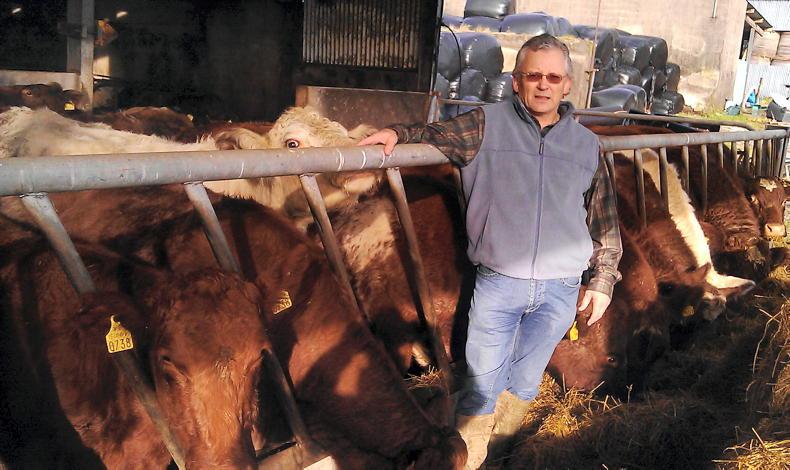
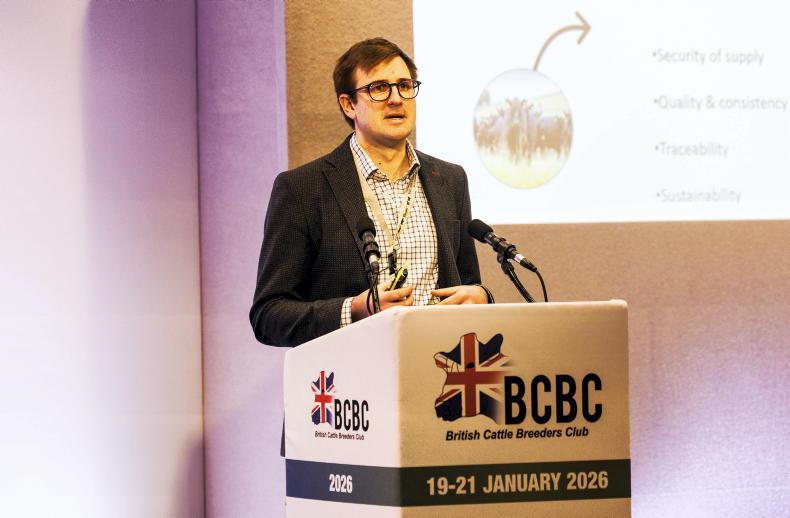
SHARING OPTIONS